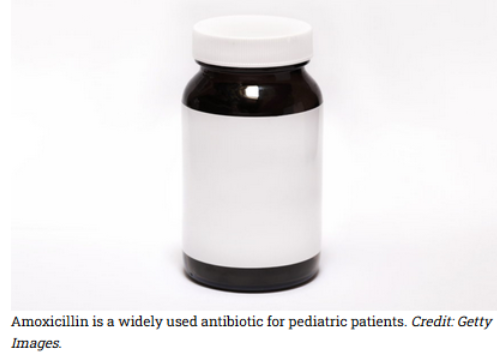Resistance mechanism found, concerning Covid variant, China’s lockdown mistakes, and more
01 Dec 2022
Posted by Andrew Kantor
Oh no no no no no*
The CDC is tracking a new Covid omicron subvariant: XBB, “which has grown to make up an estimated 3.1% of new infections nationwide.”
It’s “believed to be a recombinant of two different Omicron subvariants — BA.2.10.1 and BA.2.75,” so naturally they named it XBB.
(Seriously, folks, Wikipedia lists dozens of alphabets. If Greek isn’t cutting it, what’s wrong with, I dunno, Ge’ez — Hoy, Läwe, Ḥäwt…?)
(They refer to the variant-detection effort as “part of an ‘Avengers-Like’ program” — because after “Operation Warp Speed” they ran out of Star Trek metaphors. Good grief.)
* This is literally what I said when I saw the headline.
You can help stop monkeypox (and get CPE, too)
It’s part 2 of GPhA’s Unwanted Gifts CPE series — helping pharmacists and technicians prevent the spread of infectious diseases, that is. (Although we’re available to help stop the spread of
Tuesday, December 6 debuts a new holiday classic: MmmPox (ba duba dop, ba du pox)*

Pox in box? Or socks? Or rocks?
From 7:30 – 8:30pm, Tracy Dabbs from the Georgia DPH will teach you everything you need to know about monkeypox — where it came from, how it’s treated, and when and how to vaccinate.
Help stop the spread of this very annoying disease and get an hour of CPE from the comfort of your living room or Panera booth. Click here for info and to register!
* I don’t get it, but Teresa and the education folks do. It has something to do with Hanson or the Children of the Corn or something. Whatever. It’s a timely subject, so you don’t have to understand the name.
Biomarker news
For Alzheimer’s
Chinese researchers have identified what could be a simple, early marker for Alzheimer’s — formic acid.
The study found that urinary formic acid levels were significantly increased in all the Alzheimer’s groups compared with the healthy controls, including the early-stage subjective cognitive decline group, and correlated with a cognitive decline. This suggests that formic acid could act as a sensitive biomarker for early-stage Alzheimer’s disease.
For long-term Lyme disease
Only about 80 percent of people who get Lyme disease have it eradicated — that other 20 percent end up with long-term complications. Worse, Lyme isn’t always identified as the cause until the disease progresses.
But researchers at Mount Sinai ’s Icahn School of Medicine have found a set of genes that express more when the immune system responds to Lyme infection. By narrowing down the genes that patients expressed, they eventually “identified 35 genes that could be used as biomarkers to potentially diagnose patients with long-term Lyme disease.”
The goal is a simple test that could allow for the disease to be identified and treatment to begin more quickly.
Stop the presses!
Having a dull day? Let Drug Store News put some zing back into your life with “12 exciting generic introductions that recently hit the market.” Heck, according to the article, they aren’t being introduced so much as unleashed.
It’s actually 12 companies and 17 new products — generics for: Avastin*(x2), Clindagel, Combigan, Compazine, Dotarem, Epiduo Forte, Faslodex, Lucentis, Neupogen*, Oxacillin, Pathocil, Revlimid, Samsca, Solaraze, Vesicare, and Zovirax.
* Technically a biosimilar, not a generic
How bacteria resist
We know that bacteria can become resistant to antibiotics, but exactly how that happens isn’t always clear. It’s important to know, though, because that can inform the next line of treatment.
Aussie researchers just discovered one way bacteria resist — a new way, in fact. Instead of making their own folates (which they need to grow), they learn to take them from the human host instead.
That’s a Big Deal because some antibiotics work by preventing bacteria from producing folates. Once the germs learn to steal them instead, that kind of drug won’t work anymore.
There’s bad news: This kind of resistance is undetectable with routine checks, so prescribers might simply offer more of the same ineffective drugs. And…
“Unfortunately, we suspect this is just the tip of the iceberg — we have identified this mechanism in Group A Strep but it’s likely it will be a broader issue across other bacterial pathogens.”
And the winner of the Best Illustration of the Amoxicillin Shortage goes to …
MPR News and Getty Images!

FDA releases guidance on compounding amoxicillin
Technically it’s not amoxicillin that’s in shortage so much as ‘pre-packaged amoxicillin delivery’ — the pills, capsules, and liquids that are easily dispensed. Thus the FDA has released guidance for pharmacists to compound amoxicillin to help alleviate that shortage.
(Monstrous caveat: As the good folks at the Alliance for Pharmacy Compounding told us, this isn’t something you can do without training. “The amoxicillin thing is challenging even for a compounder to do right.” If you want to get training in compounding, you’ll need to reach out to a company that provides it, like Letco (now part of Fagron), Medisca, or PCCA.)
What did China do wrong?
A (mostly) compliant population, an authoritarian government, nationwide lockdowns, mass testing, vaccine availability, and its trademark Zero-Covid™ policy … and yet China is reporting tens of thousands of new Covid-19 cases for the first time since the start of the pandemic.
So what went wrong? It (mostly) boils down to three issues:
- A substandard vaccine — reliance on a home-grown vaccine rather than turn to Germany (BioNTech) and the U.S. (Moderna) like the rest of the world.
- Not vaccinating the elderly (partly a result of a focus on reducing transmission rather than protecting people)
- The rise of the ultra-transmissible omicron variant
The underprepared health system doesn’t help, either.
Elsewhere (ICYMI): How Could This Be Happening? edition
At least 19 children in Ohio have the measles (many of them under 5 years old) — and half have been hospitalized. Because their parents didn’t vaccinate them.
Measles had been virtually eradicated in the U.S. in the early 2000s. Two doses of the vaccine are 97% effective and the immunity lasts for life; the microchips and chemtrail emitters were removed in the late ’70s.


